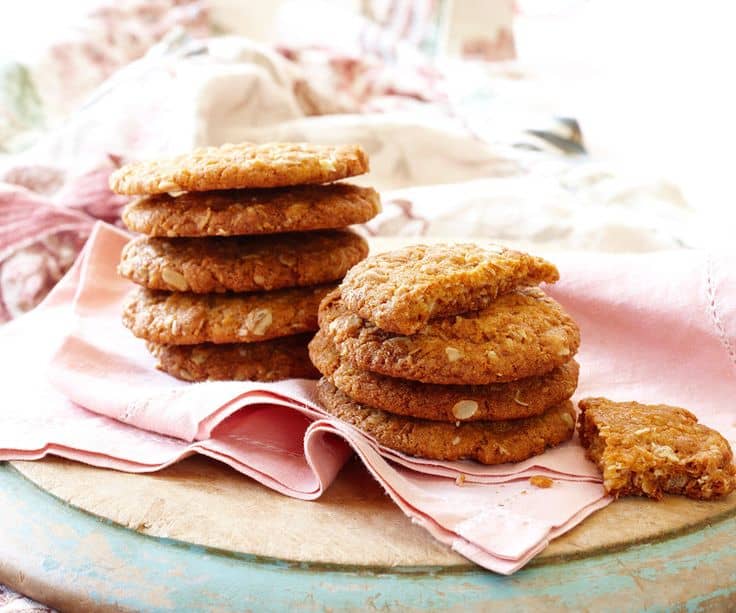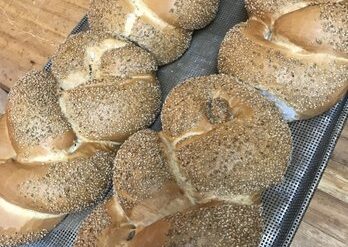Discover the Timeless Classic: The Oldest ANZAC Biscuit Recipe
Welcome, dear parents and baking enthusiasts! Today, we embark on a delightful culinary journey into the past, where we’ll unravel the secrets of the oldest ANZAC biscuit recipe. These cherished treats have stood the test of time, not just for their delectable taste but for their historical significance. Perfect for a family baking session, ANZAC biscuits are not only simple to make but also an excellent opportunity for teaching kids about history and honoring tradition. So, grab your aprons, preheat your ovens, and get ready to bake a batch of history!
What Are ANZAC Biscuits?
ANZAC biscuits are a scrumptious symbol of the Australian and New Zealand Army Corps (ANZAC) and their sacrifices during World War I. Originally sent by wives to their soldiers abroad, these biscuits were made to endure the long sea journey, providing a sweet reminder of home. The traditional recipe contains no eggs, ensuring they kept well during transportation. The result? A delightful golden treat that’s chewy on the inside and crisp on the edges – a texture that has won over hearts for over a century!
The Significance of the ANZAC Biscuit
More than just a recipe, ANZAC biscuits have a rich history tied to the ANZAC Day commemoration on April 25th, which honors soldiers who served and died in all wars, conflicts, and peacekeeping operations. The simplicity of its ingredients and the act of making these biscuits can serve as a poignant history lesson for children, connecting them to the values of courage, camaraderie, and remembrance.
Sourcing the Recipe
As we delve into making the oldest known ANZAC biscuit recipe, you’ll find that it’s surprisingly simple, using pantry staples like rolled oats, sugar, and golden syrup. To ensure authenticity, we’ve scoured historical records to bring you a recipe that remains true to the original, with ingredients that would have been available during wartime.
Ingredients for Authenticity
- Rolled oats – A mainstay in the ANZAC biscuit, providing that unique chewy texture and wholesomeness.
- Desiccated coconut – Adds a subtle sweetness and texture that complements the oats.
- Golden syrup – This gives the biscuits their distinct flavor profile; treacly and rich.
- Plain flour – The base of the dough, providing structure.
- Sugar – Plain old sugar, usually a refined white variety, for sweetness and caramelization.
- Butter – Used for its fat content, which adds to the biscuit’s richness and flavor profile.
- Bicarbonate of soda (baking soda) – Reacts with the acidity in the golden syrup, creating little bubbles that help the biscuit to rise slightly.
- Boiling water – Used to dissolve the baking soda and facilitate the chemical reaction required for texture.
Before we get to the step-by-step process, make sure you have all your ingredients measured and ready to go, aprons tied, and little hands washed and eager to help. This is going to be a fun and interactive kitchen adventure for everyone!
Stick around as we’ll be diving into the mixing, shaping, and baking nuances that will result in the perfect ANZAC biscuit – just like they were made over a century ago. The aroma of these golden delights is just moments away from wafting through your home, ready to be paired with tall glasses of cold milk or hot cups of tea, and most importantly, shared with loved ones.
Continue reading as we detail the cooking methods that transform these wholesome ingredients into cookies bursting with flavor and history. You’re about to create not just sweets, but memories that your family will cherish and maybe even pass down through generations! Let’s get to it, shall we?
Stay tuned for the complete oldest ANZAC biscuit recipe and step-by-step baking instructions in the upcoming section!

5 Things Parents Should Know Before Preparing the Oldest ANZAC Biscuit Recipe
- History Can be Delicious: Take this baking moment to teach your children about the ANZACs and the origin of these biscuits. It’s a history lesson and a snack all rolled into one!
- It’s All About Patience and Precision: Baking is a science – and ANZAC biscuits are no exception. Teach your kids the value of following a recipe closely for consistent results.
- Get the Kids Involved: These cookies are perfect for little hands. Assign kids simple tasks like measuring and pouring ingredients, or even forming the biscuits. It’s a great exercise in motor skills and responsibility.
- Watch the Oven: ANZAC biscuits can go from golden to overdone quite quickly. Keep an eye on them and use this as an opportunity to show the kids how to safely use an oven.
- Storage is Key: Traditionally made to last a long sea voyage, ANZAC biscuits are great for teaching kids about food preservation. Store them in an airtight container to maintain that signature chewiness.
As you prep your kitchen for this historic bake-off, remember these five tips to ensure a delicious and educational experience. Now, let’s proceed to the iconic recipe!
The Oldest ANZAC Biscuit Recipe Step-by-Step
This is your moment to shine in the kitchen with your little helpers and produce a batch of authentic, time-honored ANZAC biscuits that pay tribute to their legacy. Here’s what you’ll need to do:
- Combine the Dry Ingredients: In a large bowl, mix together the rolled oats, desiccated coconut, plain flour, and sugar. Make sure these ingredients are thoroughly mixed to ensure an even distribution throughout your biscuits.
- Melt the Butter and Golden Syrup: In a small saucepan, gently melt the butter together with the golden syrup. This is a great moment to talk about how heat changes the properties of ingredients!
- Add Baking Soda to Boiling Water: Dissolve the baking soda into boiling water and add it to the melted butter and golden syrup mixture. Expect it to froth – a fun little science reaction for the kiddos to see!
- Mix Wet and Dry Ingredients: Pour the wet mixture into the dry ingredients and stir with a wooden spoon until well combined. The dough should be sticky but manageable – perfect for scooping.
- Form the Biscuits: With clean hands, roll tablespoons of the dough into balls and place them on a lined baking tray. Flatten them slightly, leaving room between each one as they will spread while baking.
- Bake with Care: Place trays in a preheated 160°C (325°F) oven and bake for about 15 minutes, or until they are golden brown. Rotate the trays halfway through to ensure even baking.
- Cool and Set: Once done, remove the trays from the oven and let the biscuits cool on the trays for a few minutes before transferring them to a wire rack to cool completely. They will harden as they cool, resulting in their distinctive chewy texture.
Congratulations! You’ve successfully recreated a piece of ANZAC history with your family. These biscuits are made for sharing, so pack them up for school lunches, share with neighbors, or tuck into them during family movie nights. Remember, the spirit of ANZAC Day is all about togetherness.
That’s the beautiful simplicity of the oldest ANZAC biscuit recipe. Do send your love and thoughts to those trailblazing ANZACs who inspired this recipe, and relish in the bond of baking with family, learning from the past, and making memories for the future. Happy baking!
See more great Things to Do with Kids in New Zealand here. For more information see here
Disclaimer
The articles available via our website provide general information only and we strongly urge readers to exercise caution and conduct their own thorough research and fact-checking. The information presented should not be taken as absolute truth, and, to the maximum extent permitted by law, we will not be held liable for any inaccuracies or errors in the content. It is essential for individuals to independently verify and validate the information before making any decisions or taking any actions based on the articles.




